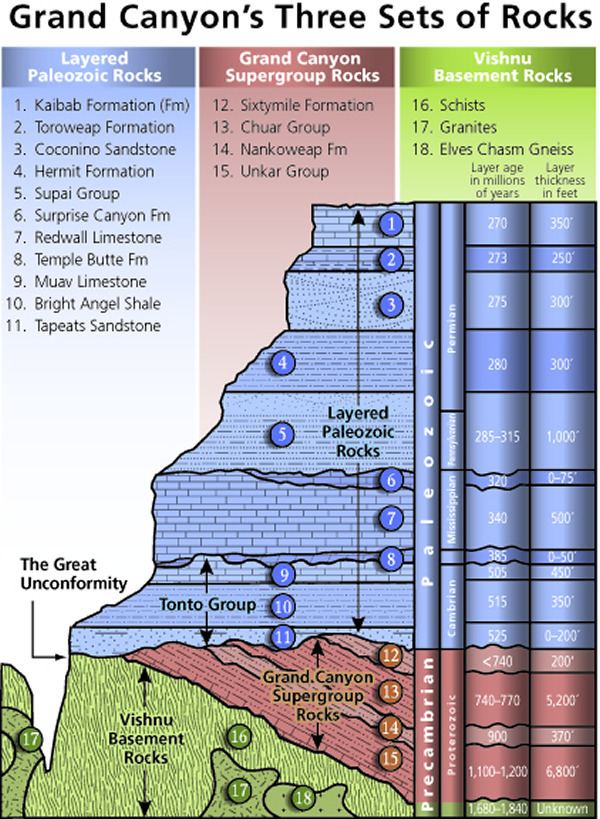Thickness 1,600 m | Primary Mudstone | |
 | ||
Sub-units Galeros Formation and Kwagunt Formation Country United States of America | ||
Stromatolites of the chuar group
The Neoproterozoic Chuar Group consists of 5,250 feet (1,600 m) of fossiliferous, unmetamorphosed sedimentary strata that is composed of about 85% mudrock. The Group is the approximate upper half of the Grand Canyon Supergroup, overlain by the thin, in comparison, Sixtymile Formation, the top member of the multi-membered Grand Canyon Supergroup.
Contents
- Stromatolites of the chuar group
- Geologic sequence of Grand Canyon Supergroup
- Popular Publications
- References
The mudrock is interbedded with meter-thick sandstone and dolomite beds. The mudrocks are typically gray to black when freshly exposed and weather to reddish or greenish colors. The fresh gray to black colors of the mudrocks are due to a high organic content. Some samples of these mudrocks contain high total-organic-carbon percentages that are as much 9.39 weight percent organic carbon. The sandstone beds often exhibit symmetrical ripple marks. These ripple marks are commonly draped with a thin veneer of mudstone with mudcracks. These strata have been subdivided into the Galeros Formation (lower) and the Kwagunt Formation (upper) using the base of the prominent, thick sandstone unit.
The Chuar Group is quite fossiliferous. The dolomite beds are associated with at least six different types of either stromatolites or microbially influenced carbonate precipitation. The gray and black mudrocks often contain an abundance of microfossils, including vase-shaped microfossils (VSMs), acritarchs, “Sphaerocongregus variabilis“, and organic chemicals characteristic of dinoflagellates. Finally, the enigmatic circular fossils of Chuaria circularis are found at various levels within the Chuar Group.
The types of fossils found and sedimentary strata comprising the Chuar Group are indicative of its deposition within a low-energy marine embayment. During the deposition of the Chuar Group, this embayment was influenced by tidal and wave processes, infrequent large storms, microbial activity and carbonate precipitation, and the accumulation of mud and organic matter in quiet water. The sediments and fossils suggest that the Chuar Group accumulated in relatively shallow water (tens of meters or less), possibly, with times of intermittent exposure on a tidal flat.
Geologic sequence of Grand Canyon Supergroup
The units of the Grand Canyon Supergroup: (1250 Ma to 700 Ma)
